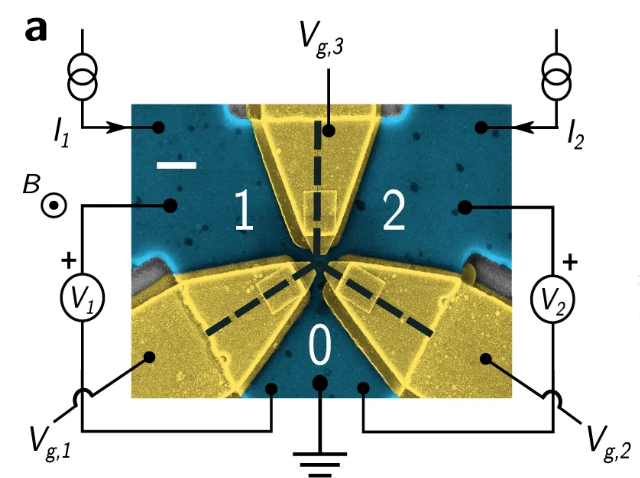A College of Science and Engineering professor and graduate students developed a new variant of a superconducting diode, a key component in most computers, according to a University of Minnesota press release.
Compared to older superconducting diodes, this component uses less energy, has a faster computing speed and can process multiple signal inputs at the same time.
Diodes are key components in computers and other common electronic devices. Traditionally, they can only conduct an electrical current in one direction.
“They’re used a lot in regular electronics — kind of like a one-way valve,” said Vlad Pribiag, an associate professor at the School of Physics and Astronomy and senior author of the paper. “So you can flow a current in one way, but you might not flow it the other way.”
A superconducting diode is more powerful than an ordinary one because of its properties, which allow it to conduct more electricity with less resistance and in multiple directions as opposed to the one-way valve used in traditional diodes. Pribiag said any ordinary superconducting diode would cause the flow of energy to dissipate if its direction was changed.
This problem with older superconducting diodes is one of the reasons the new one was developed. The device utilizes Josephson junctions, which are made when a non-superconducting material, such as nickel, is placed between two superconducting materials, like aluminum.
Gino Graziano, a graduate student on the development team, said unlike a regular superconductor, which only houses two of these Josephson terminals for controlling electrical currents, this device features three, allowing for more control over the flow and speed of energy.
The materials and techniques used to manufacture this kind of diode are industry-friendly, which means the community could see this kind of component appearing in high-powered computers used by large institutions.
“When you fabricate these devices, they turn out more-or-less the same,” said Mohit Gupta, another graduate student on the team. “When you’re talking large-scale, everything has to be replicated exactly.”
While it is unlikely this type of component could be found in a household computer or personal laptop, due to the growing interest in superconducting technology and quantum computing, Pribiag said this device could stay relevant for use in more powerful machines for at least the next decade.
One of these uses Pribiag expanded upon was using this device to delve deeper into neuromorphic computing — a way of developing artificial intelligence (AI) technology using hardware instead of software. Neuromorphic computing is a practice in which the components of a computer connect and send signals in a similar way to human neurons.
Pribiag said the multiple terminals of this superconducting diode could bring in multiple signals at once, which the practice requires.
“It will take, certainly, additional research to really see how this could play out, but we have a basic promising functionality here that we think could lead to neuromorphic and thus AI computing,” Pribiag said.
The full research paper is published in Nature Communications, an open-access journal intended to represent significant scientific advances to researchers across a variety of scientific fields.













